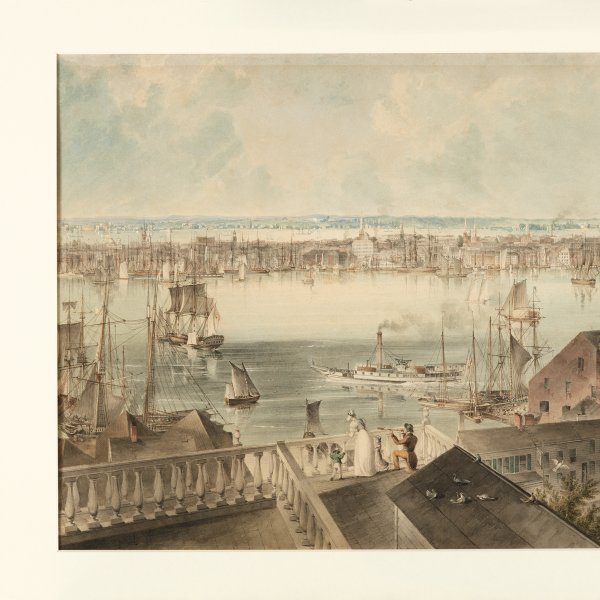John William Hill
Londres, 1812-West Nyack, 1879
John William Hill was born in London on 13 January 1812. In 1816, his father John Hill-an engraver best known for his work after William Guy Wall's watercolours for the Hudson River Portfolio (1820-1825)-emigrated to America and set up an aquatint shop, at first in Philadelphia and later in New York. In 1819 John William Hill and his family joined their father in New York; where the young Hill began a seven-year apprenticeship, painting views for his father's engravings. In 1825 John William Hill exhibited for the first time at the National Academy of Design, which led to his election as an Associate in 1833. In 1836 his father purchased a farm near West Nyack, New York, where John William also established his own family after his marriage to Catherine Smith. Their son John Henry was born in 1839 and became later the third member of the Hill family to undertake the artistic path. The same year Hill was employed by a New York State Geological Survey to make a series of drawings. Between 1850 and 1855 Hill realied for the Smith Brothers' a series of watercolours and lithographic views of a number of cities ranging from Halifax to the Havana. He also collaborated with E. Hastings on a suite of architectural designs adapted to the country. Around 1855, he read the first volume of John Ruskin's Modern Painters, which encouraged him to work more directly from nature. Between 1855 and 1857 Hill made summer study trips to Catskills, New York, White Mountains, New York, and the coast of Maine. During the winters he painted still-life. In 1859 he met the American Pre-Raphaelite artist Thomas Farrer who became a close friend and strongly influenced his art. Hill died in West Nyack, New York, on 24 September 1879.
Kenneth W. Maddox
Kenneth W. Maddox





